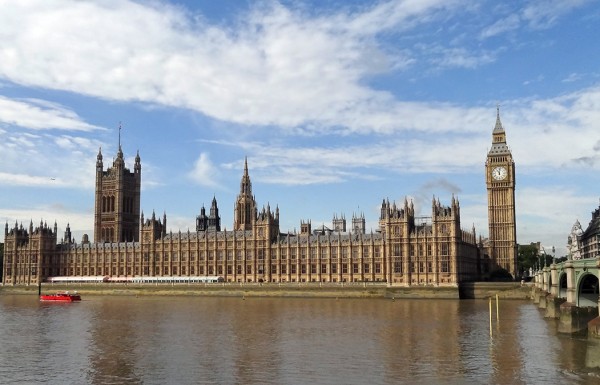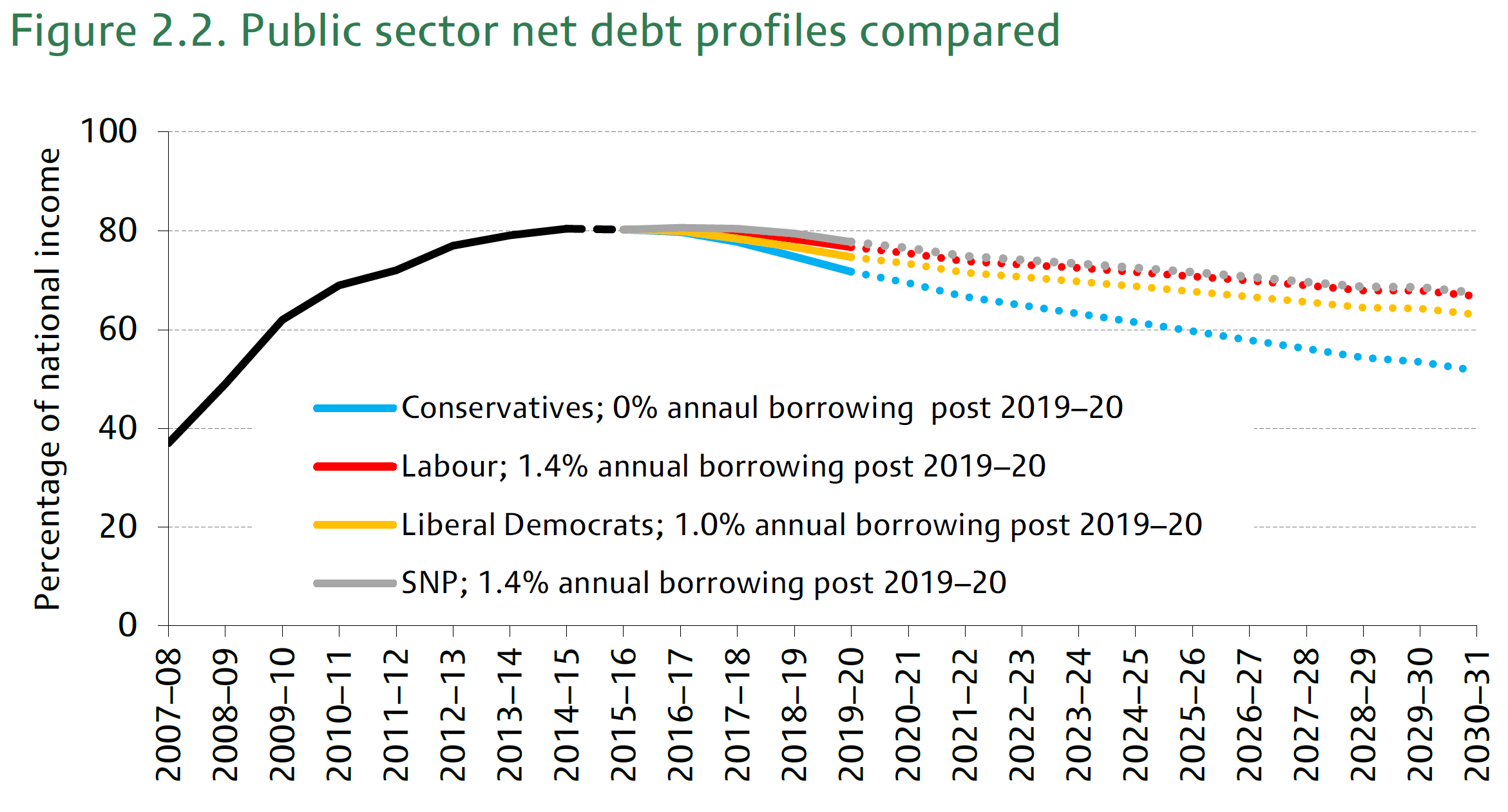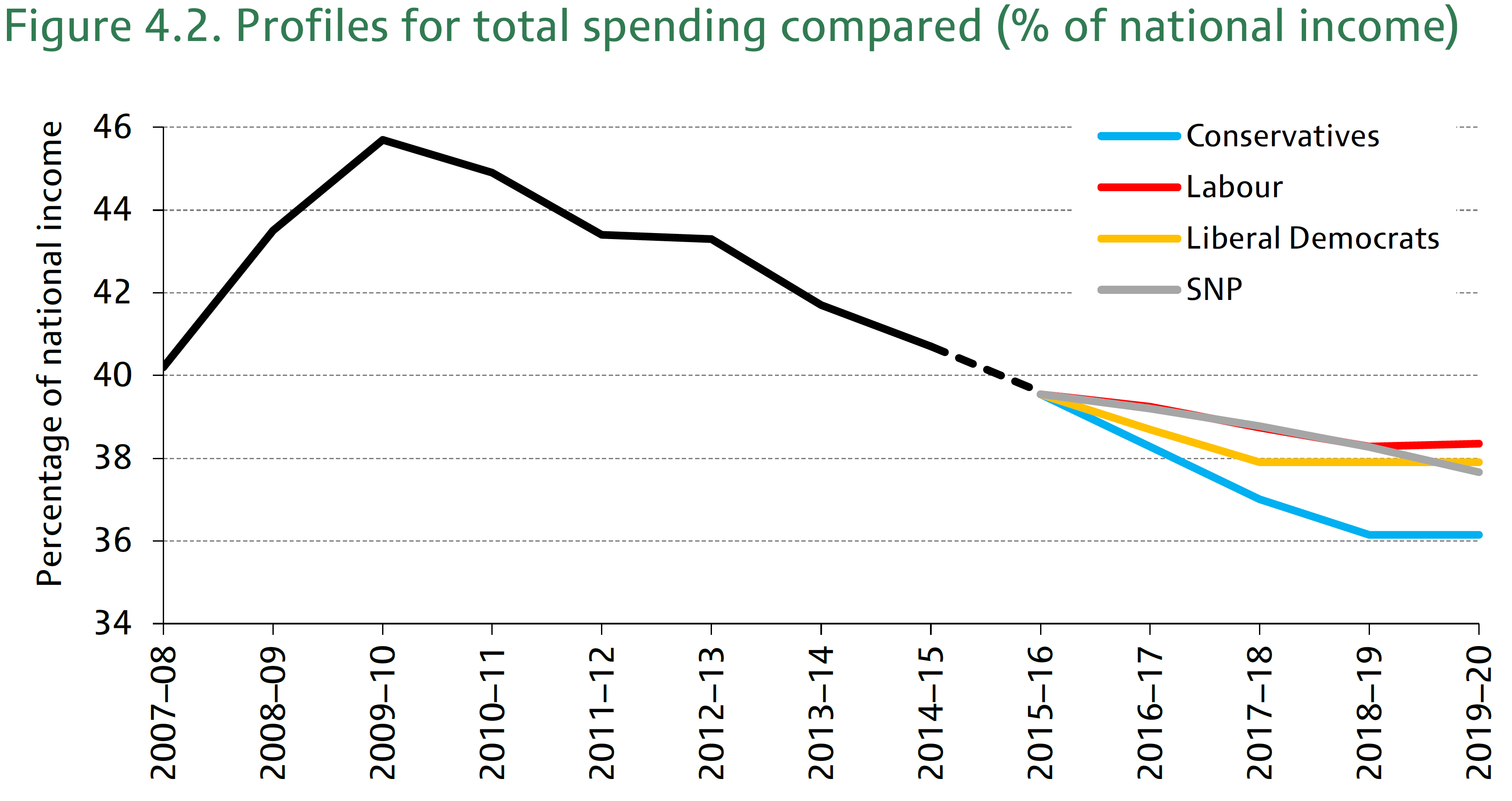 There are countless people who work 12-hour days – some get rewarded with huge salaries, while others are paid peanuts. A key question is: are these people happy? With 24 hours in a day for both rich and poor, the more hours we work, the fewer hours we have for leisure time. So, how do we choose the optimal work-life balance?
There are countless people who work 12-hour days – some get rewarded with huge salaries, while others are paid peanuts. A key question is: are these people happy? With 24 hours in a day for both rich and poor, the more hours we work, the fewer hours we have for leisure time. So, how do we choose the optimal work-life balance?
In economics, we often talk about the concept of diminishing marginal utility and this concept can be applied to working life. For many people, each additional hour worked is tougher or adds less to your utility – we get tired, bored and the job may seem more unpleasant the more hours you work. The typical day of work is around 7-8 hours, but across Sweden, some offices are now closing at 3.30, with a 6-hour working day, but with salaries remaining the same.  It’s not a new idea in Sweden and trials of this shorter working day concept have proved successful, with higher reported profits, better service to customers (or patients) and happier, more productive staff.
It’s not a new idea in Sweden and trials of this shorter working day concept have proved successful, with higher reported profits, better service to customers (or patients) and happier, more productive staff.
This shorter working day is not a common occurrence across Sweden or other countries, but it’s a practice that is certainly garnering media attention. Companies will certainly be keen if this means an increase in productivity, but one key concern will be the potential loss of business from companies who do keep working after 3.30 and expect phones to be answered.
It would certainly be an attractive prospect for employees and perhaps is a good way of ‘poaching’ the best staff and hence of boosting worker productivity. With more free time, perhaps an employee’s happiness would also increase, which could have significant effects on a range of variables. The following article considers this shorter working day.
The truth about Sweden’s short working hours BBC News, Maddy Savage (2/11/15)
Questions
- Explain the concept of diminishing marginal utility with respect to hours worked. Can this be used to explain why overtime often receives higher rates of pay?
- Using indifference analysis, explain how a change in the number of hours worked might affect an individual’s happiness.
- Why might a shorter working day help to increase a firm’s profits?
- If a shorter working day did increase happiness, what other factors might be affected? Does this explain why other countries are so interested in the success of this initiative?
 In their manifestos, the parties standing for the UK general election on May 7th state their plans for fiscal policy and, more specifically, for reducing public-sector net borrowing and public-sector net debt. The degree of detail in the plans varies, especially with regards to where cuts will be made, but there are nevertheless some very clear differences between the parties.
In their manifestos, the parties standing for the UK general election on May 7th state their plans for fiscal policy and, more specifically, for reducing public-sector net borrowing and public-sector net debt. The degree of detail in the plans varies, especially with regards to where cuts will be made, but there are nevertheless some very clear differences between the parties.
The Institute for Fiscal Studies has examined the public finance plans of the Conservatives, Labour, Liberal Democrats and SNP and has published a briefing note (see link below) and an accompanying press release. It accuses all four parties’ plans of being short on detail over specific cuts (especially the Conservatives), and over borrowing requirements (especially Labour):
None of these parties has provided anything like full details of their fiscal plans for each year of the coming parliament, leaving the electorate somewhat in the dark as to both the scale and composition of likely spending cuts and tax increases. In our analysis we have used the information provided in each manifesto, plus in some cases some necessary assumptions, to shed light on the four parties’ plans.
But despite the lack of detail, the IFS claims that there are big differences in the parties’ plans. These are illustrated in the following three charts from the IFS Briefing Note.



According to Carl Emmerson, IFS deputy director:
“There are genuinely big differences between the main parties’ fiscal plans. The electorate has a real choice, although it can at best see only the broad outlines of that choice. Conservative plans involve a significantly larger reduction in borrowing and debt than Labour plans. But they are predicated on substantial and almost entirely unspecified spending cuts and tax increases. While Labour has been considerably less clear about its overall fiscal ambitions its stated position appears to be consistent with little in the way of further spending cuts after this year”.
So what would be the implications of the plans of the various parties for fiscal policy and what, in turn, would be the implications for economic growth and investment? The various videos and articles look at the briefing note and at what is missing from the parties’ plans.
Videos
 Voters ‘in the dark’ over budgets BBC News, Robert Peston (23/4/15)
Voters ‘in the dark’ over budgets BBC News, Robert Peston (23/4/15)
 Election 2015: Main parties respond to IFS deficit claims BBC News, James Landale (23/4/15)
Election 2015: Main parties respond to IFS deficit claims BBC News, James Landale (23/4/15)
 Election 2015: ‘Not enough detail’ on deficit cut plans, says IFS BBC News, Paul Johnson (23/4/15)
Election 2015: ‘Not enough detail’ on deficit cut plans, says IFS BBC News, Paul Johnson (23/4/15)
 IFS: Electorate ‘left in the dark’ by political parties ITV News, Chris Ship (23/4/15)
IFS: Electorate ‘left in the dark’ by political parties ITV News, Chris Ship (23/4/15)
 Voters Left In Dark Over Spending Cuts, Says IFS Sky News (23/4/15)
Voters Left In Dark Over Spending Cuts, Says IFS Sky News (23/4/15)
 Post-election austerity: parties’ plans compared Institute for Fiscal Studies, Press Briefing (23/5/15)
Post-election austerity: parties’ plans compared Institute for Fiscal Studies, Press Briefing (23/5/15)
Articles
IFS: election choice is stark Economia, Oliver Griffin (23/4/15)
Election 2015: Voters ‘left in the dark’, says IFS BBC News (23/4/15)
The huge choice for voters BBC News, Robert Peston (23/4/15)
IFS manifesto analysis: fantasy island of Tory deficit reduction plan The Guardian, Larry Elliott (23/4/15)
Tories have £30bn black hole in spending plans, says IFS The Guardian, Heather Stewart (23/4/15)
Ed Miliband will leave Britain an extra £90bn in debt, IFS finds The Telegraph, Steven Swinford (23/4/15)
IFS despairs as it finds no party’s imaginary numbers add up The Guardian, John Crace (23/4/15)
Reality Check: Why should we trust the IFS? BBC News, Sebastian Chrispin (23/4/15)
IFS: Households can expect lower incomes, whoever wins the election BBC News, Brian Milligan (28/4/15)
Briefing Notes
Post-election Austerity: Parties’ Plans Compared Institute for Fiscal Studies, Briefing Note BN170, Rowena Crawford, Carl Emmerson, Soumaya Keynes and Gemma Tetlow (April 15)
Taxes and Benefits: The Parties’ Plans Institute for Fiscal Studies, Briefing Notw BN 172, Stuart Adam, James Browne, Carl Emmerson, Andrew Hood, Paul Johnson, Robert Joyce, Helen Miller, David Phillips, Thomas Pope and Barra Roantree (April 2015)
Questions
- What detail is missing about cuts in the Conservative plans?
- What detail is missing in the Labour plans on borrowing requirements?
- How do (a) the Liberal Democrat plans and (b) the SNP plans differ from Conservative and Labour plans?
- Find out the public finances plans of (a) the Green Party; (b) UKIP; and (c) Plaid Cymru. How different are these plans from those of other parties?
- Define ‘austerity’.
- How would a tightening of fiscal policy affect economic growth (a) in the short term; (b) in the long term?
- How would an expansion of the economy affect the budget balance through automatic fiscal stabilisers?
- What is meant by the structural deficit? How could this be reduced?
- Would the structural deficit be affected by austerity policies and the resulting size of the output gap, or is it independent of such policies? Explain.
 Many people are attracted to work in the private sector, with expectations of greater opportunities for promotion, more variation in work and higher salaries. However, according to the Office for National Statistics, it may be that the oft-talked-of pay differential is actually in the opposite direction. Data from the ONS suggests that public sector workers are paid 14.5% more on average than those working in the private sector.
Many people are attracted to work in the private sector, with expectations of greater opportunities for promotion, more variation in work and higher salaries. However, according to the Office for National Statistics, it may be that the oft-talked-of pay differential is actually in the opposite direction. Data from the ONS suggests that public sector workers are paid 14.5% more on average than those working in the private sector.
As is the case with the price of a good, the price of labour (that is, the wage rate) is determined by the forces of demand and supply. Many factors influence the wages that individuals are paid and traditional theory leads us to expect higher wages in sectors where there are many firms competing for labour. With the government acting as a monopsony employer, it has the power to force down wages below what we would expect to see in a perfectly competitive labour market. However, the ONS data suggests the opposite. What factors can explain this wage differential?
Jobs in the public sector, on average, require a higher degree of skills. There tend to be entry qualifications, such as possessing a university degree. While this is the case for many private-sector jobs as well, on average it is a greater requirement in the public sector. The skills required therefore help to push up the wages that public-sector workers can demand. Another explanation could be the size of public-sector employers, which allows them to offer higher wages. When the skills, location, job specifications etc. were taken into account, the 14.5% average hourly earnings differential declined to between just 2.2% and 3.1%, still in favour of public-sector workers. It then reversed to give private-sector workers the pay edge, once the size of the employer was taken out.
Further analysis of the data also showed that, while it may pay to be in the public sector when you’re starting out on your career, it pays to be in the private sector as you move up the career ladder. Workers in the bottom 5% of earners will do better in the public sector, while those in the top 5% of earners benefit from private-sector employment. The ONS said:
Looking at the top 5%, in the public sector earnings are greater than £31.49 per hour, while in the private sector, the top 5% earn more than £33.63 per hour… The top 1% of earners in the private sector, at more than £60.21 per hour, earns considerably more than the top 1% of earners in the public sector, at more than £49.65 per hour.
The data from the ONS thus suggest a reversal in the trend of average public-sector pay being higher than private sector pay, once all the relevant factors are taken into account.
This will naturally add to debates about living standards, which are likely to take on a stronger political slant as the next election approaches. It is obviously partly down to the public-sector pay freeze that we saw in 2010 and also to a reversal, at least in part, of the previous trend from 2008, where public-sector pay  had been growing faster than private-sector pay. However, depending on the paper you read or the person you listen to, they will offer very different views as to who gets paid more. All you need to do in this case is look at the titles of the newspaper articles written by the Independent and The Telegraph! Whatever the explanation, these new data provide a wealth of information about relative prospects for pay for everyone.
had been growing faster than private-sector pay. However, depending on the paper you read or the person you listen to, they will offer very different views as to who gets paid more. All you need to do in this case is look at the titles of the newspaper articles written by the Independent and The Telegraph! Whatever the explanation, these new data provide a wealth of information about relative prospects for pay for everyone.
Data
Public and Private Sector Earnings Office for National Statistics (March 2014)
Annual Survey of Hours and Earnings, 2013 Provisional Results Office for National Statistics (December 2013)
Articles
Austerity bites as private sector pay rises above the public sector for the first time since 2010 Independent, Ben Chu (10/3/14)
Public sector workers still better paid despite the cuts The Telegraph, John Bingham (10/3/14)
Public sector hourly pay outstrips private sector pay BBC News (10/3/14)
Public sector workers are biggest losers in UK’s post-recession earnings squeeze The Guardian, Larry Elliott (11/3/14)
New figures go against right-wing claims that public sector workers are grossly overpaid Independent, Ben Chu (10/3/14)
Public sector pay sees biggest shrink on 2010, figures suggest LocalGov, Thomas Bridge (11/3/14)
Public sector staff £2.12 an hour better off The Scotsman, David Maddox (11/3/14)
Questions
- Illustrate the way in which wages are determined in a perfectly competitive labour market.
- Why does monopsony power tend to push wages down?
- Why does working for a large company suggest that you will earn a higher wage on average?
- Using the concept of marginal revenue product of labour, explain the way in which higher skills help to push up wages.
- How significant are public-sector pay freezes in explaining the differential between public- and private-sector pay?
- Why is there a difference between the bottom and top 5% of earners? How does this impact on whether it is more profitable to work in the public or private sector?
Approximately 1.6 million past and present female employees of Walmart have had their sex discrimination case dismissed by the US Supreme Court. This case began almost 10 years ago with claims by 5 female workers that they were paid less than their male counterparts and had been passed over for promotion. Despite statistical evidence suggesting a case of sexual discrimination, it was ruled that Walmart was not discriminating against women, as promotion decisions were made by individual managers, hence there was no common element between the plaintiffs. Justice Antonin Scalia said that a common element was ‘entirely absent here’.
Discrimination of any kind will have an impact on the demand curve for labour (or the marginal revenue product curve). As such, the equilibrium wage rate will also be affected: if a firm believes that women are less productive than their male counterparts, the MRP curve will shift inwards, pushing down their wage. The key to this case was that there were so many plaintiffs and so it was practically impossible to determine whether or not pay differentials and promotions were based on legitimate grounds. The following articles consider the case against Walmart.
Supreme Court decision in Walmart class-action claim brings praise, anger FoxNews (20/6/11)
Walmart wins class action ruling Financial Times, Barney Jopson (20/6/11)
Wal-Mart women denied discrimination class action BBC News (20/6/11)
Walmart sex discrimination class action rejected Guardian, Dominic Rushe (20/6/11)
Questions
- Why might a firm engage in discrimination?
- Use a diagram to illustrate the impact of discrimination against women by a firm on the marginal revenue product curve for women.
- Following discrimination against women and in favour of men, what happens to the men’s marginal product curve?
- Given your answer to the above 2 questions, what would you expect to happen to the equilibrium number of male and female workers and the male and female wage rate?
- Are there any adverse effects to a firm of engaging in discrimination of any kind?
Ahead of Lord Davies’s report on Boardroom equality, he will be somewhat alarmed by the survey results carried out by the Institute of Leadership and Management, which found that 73% of women felt that they still face barriers to top-level promotion. Quotas are a suggestion to break down this barrier. As Sheelagh Whittaker, a non-executive directive of Standard Life said:
‘I am a big supporter of quotas. I believe that we will only have true equality when we have as many incompetent women in positions of power as incompetent men.’
However, others say that quotas are not the answer, as they don’t actually change the fundamentals. Forcing compliance for equality in the workplace is not the same as equality in the workplace. There are a number of other reasons behind fewer women in top level positions, including less confidence and ambition, a more risk-averse attitude to promotion, as well as more women than men aspiring to run their own company, rather than seek promotion within a firm. So does discrimination still remain in the workplace or are there other explanations for the fact that only 12% of FTSE 100 directors are women?
Women still face a glass ceiling Guardian, Graham Dnowdwon (21/2/11)
Female managers say classing ceiling intact – survey BBC News (21/2/11)
The ‘glass ceiling’ is all in the mind: women lack confidence and ambition at work says new survey Daily Mail, Steve Doughty (21/2/11)
Women hit glass ceiling while report rejects boardroom quotas Independent, David Prosser (21/2/11)
Poll: Glass ceiling still a barrier The Press Association (21/2/11)
Men not to blame for the glass ceiling The Australian, Jack Grimston (21/2/11)
Questions
- How are equilibrium wages determined in perfect and imperfect markets?
- Is it efficient for a firm to pay men more than women or to hire/promote more men than women?
- Illustrate the concept of discrimination against women in the labour market. Think about the effect on the MRP curve and hence on equilibrium quantity and wage. How does this affect the MRP curve for men?
- What are the other causes of less women being FTSE 100 directors besides ‘the glass ceiling’?
- To what extent would a quota be effective in achieving gender equality in the workplace?
- Are there any other policies that could be used to tackle discrimination of any kind? What are the pros and cons of each?
 There are countless people who work 12-hour days – some get rewarded with huge salaries, while others are paid peanuts. A key question is: are these people happy? With 24 hours in a day for both rich and poor, the more hours we work, the fewer hours we have for leisure time. So, how do we choose the optimal work-life balance?
There are countless people who work 12-hour days – some get rewarded with huge salaries, while others are paid peanuts. A key question is: are these people happy? With 24 hours in a day for both rich and poor, the more hours we work, the fewer hours we have for leisure time. So, how do we choose the optimal work-life balance? It’s not a new idea in Sweden and trials of this shorter working day concept have proved successful, with higher reported profits, better service to customers (or patients) and happier, more productive staff.
It’s not a new idea in Sweden and trials of this shorter working day concept have proved successful, with higher reported profits, better service to customers (or patients) and happier, more productive staff.





